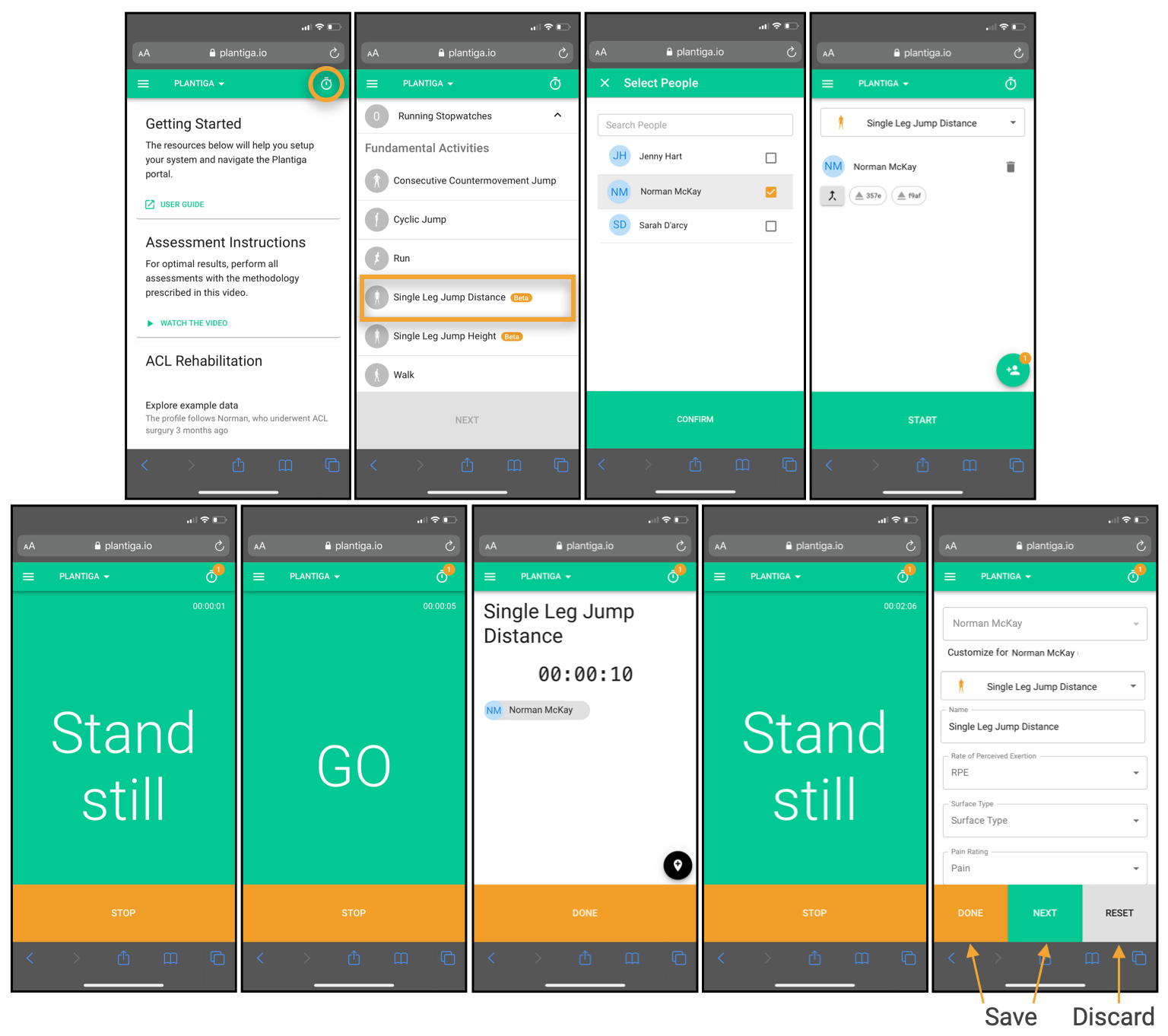An objective way to measure asymmetry by testing each leg individually.
Here, we'll cover the procedures for single leg jumps for distance and height along with how to interpret the data and the research behind using these assessments.
Single Leg Jumps (SLJ) are a type of plyometric exercise. Plyometrics are exercises that enable a group of muscles to reach maximal strength in as short a time as possible. They help bridge the gap between speed and strength training. Single Leg Jumps give practitioners an objective measure of improvements of power and movement quality during the final stages of rehabilitation for lower limb injuries. Additionally, Single Leg Jumps help to quantify asymmetries as they assess each leg independently of the other.
Procedure for Single Leg Jumps:
IMPORTANT: The subject must face the same direction throughout the duration of the test. So for the Single Leg Jumps for Distance, the subject can either continuously jump forward (space permitting) or walk backwards to the starting point between each jump. See the video below for the protocol.
- Tester navigates to the measure page of the Plantiga app and selects either the Single Leg Jump for Distance or Single Leg Jump for Height Test.
- Tester selects the subject that will be performing the activity. Address any warnings that may come up once they have been selected.
- Tester instructs subject to stand still with hands on hips and feet planted firmly on the ground.
- Tester begins the Single Leg Jump Test and the subject remains still as the stopwatch counts down from 5.
- Once ready, the subject performs 3 jumps with each leg, alternating legs between each jump. It does not matter which leg the subject chooses to start with, and they can perform these jumps at whatever pace they choose.
- Once all jumps have been performed, the tester instructs the subject to stop and plant their feet firmly on the ground.
- Once still, the tester stops the stopwatch and the subject remains still for 5 seconds.
- Tester fills out optional information (RPE, Pain, Floor type...) and saves the Single Leg Jump Test
The single leg jump for height creates larger magnitudes of work at the knee joints when compared to the single leg jump for distance. Since the single leg jump for height targets primarily knee extensors, this test can be used to determine functional deficits of the quadriceps complex between the left and right leg.

Single Leg Jump for Distance
Significance of the Single Leg Jump for Distance:
Single leg jumps for distance require complex hip and trunk movements to maintain postural stability. Additionally, single leg jumps for distance create larger work at the hip and ankle joint when compared to a single leg jump for height. Therefore, single leg jumps for distance can be used to determine functional deficits in either the hip or ankle complex.
Single Leg Jump for Height
Significance of the Single Leg Jump for Height:
The single leg jump for height creates larger magnitudes of work at the knee joints when compared to the single leg jump for distance. Since the single leg jump for height targets primarily knee extensors, this test can be used to determine functional deficits of the quadriceps complex between the left and right leg.
Interpreting Values for Single Leg Jumps
As each individual athlete will vary in their abilities, it is important to use these averages as a guideline, focusing primarily on rehabilitating an athlete back to their baseline, along with paying attention to the movement quality of each jump (eg: dynamic knee valgus)
Distance: (Ried et al, 2007)
• 16 weeks post-op - Goal is to have operative limb 80% of Non-operative limb when beginning jumps
• Males - Operative (cm) - 117.0 ± 36.8; Non-Operative (cm) - 139.8 ± 35.9
• Females - Operative (cm) - 105.9 ± 26.2; Non-Operative (cm) - 129.8 ± 23.0
• 22 weeks post-op - Goal is to have operative limb be at 90% (10% increase from 16 weeks) of non-operative limb (7% increase minimum for significant change)
• Males - Operative (cm) - 148.5 ± 28.5Non-Operative (cm) - 167.3 ± 25.3
• Females - Operative (cm) - 133.2 ± 25.9Non-Operative (cm) - 151.6 ± 25.0
Height: (Pua et al, 2017)
• 24 weeks Post-op - (based on Pua et al. 2017 study with a cohort of 70 ACL patients (86% males), they used a protocol in which hands were on hips while jumping)
• Operative limb (cm) - 8.8 ± 3.6
• Non-Operative Limb (cm) - 9.6 ± 3.6
Literature Supporting the Significance of Single Leg Jumps in ACL Rehabilitation:
Using Single Leg Jumps to measure ACL injury progress - Single Leg jumps can help patients progress in strength, control, and proper movement patterns during the progress of their ACL rehabilitation. The goal of this testing is to have a less than 20% difference in hop distance at 16 weeks post-op and improve to a 10% difference in hop distance at 22 weeks post-op between the injured limb and uninjured limb
➡️ Hop Testing Provides a Reliable and Valid Outcome Measure During Rehabilitation After Anterior Cruciate Ligament Reconstruction (Ried et al, 2007)
➡️ Associations Among Quadriceps Strength and Rate of Torque Development 6 Weeks Post Anterior Cruciate Ligament Reconstruction and Future Hop and Vertical Jump Performance: A Prospective Cohort Study (Pua et al, 2017)
.png?height=120&name=Plantiga%20lockup%20black%20(1).png)